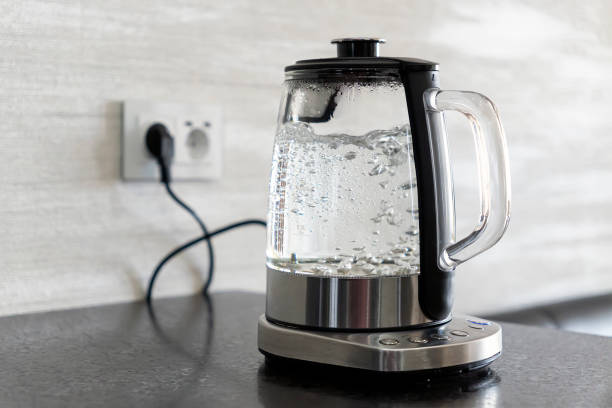How to Make Tea and Coffee with Kettles – Simple Tips for Perfect Brews
Whether you begin the morning with a hot cup of tea or kick off the afternoon with coffee, a kettle is one of the most important appliances in the kitchen.
This is an ultimate beginner’s guide to brewing tea and coffee with kettles electric and stove top. You’ll also discover key tips, common mistakes to avoid, and the best types of kettles for your brewing needs.
Looking for the best tea and coffee kettles?
Table of Contents
Quick Guide to Kettles
Kettles are arguably the most obvious and sensible equipment for preparing hot drinks. Their sole, unadorned purpose is to warm water. Their contribution to preparing good tea and coffee is not substitutable.
From steeping herb infusions to creating the ideal pour-over coffee, kettles are the secret to getting it just so No matter if you are utilizing a traditional stovetop kettle or a new electric kettle, both will work fantastically well if you use them accordingly.
Both of them have some pros, and it entirely relies on your personal choice, way of life, and the type of tea or coffee you prefer.
Types of Kettles: Stovetop vs Electric
Pre-brewing, there is a need to look at the distinction between stovetop kettles and electric kettles.
Stovetop Kettles:
The traditional choice, stovetop kettles, are merely placed on the flame. Most often, they are stainless steel, glass, copper, or cast iron. Hugged for their classic appearance and ease of use, they suit any gas or electric burner.
Pros:
Cons:
Electric Kettles:
Electric kettles are quicker, intelligent, and more convenient. Just add water, press a button, and have boiling water for a few minutes. Most contemporary models have variable temperature controls, making them perfect for particular types of teas and coffees.
Pros:
Cons:
Considering purchase? Read our comprehensive product reviews:
How to Make Tea with a Kettle:
Steeping tea is more than simply pouring hot water into a cup. Water temperature, steeping time, and tea type all influence the end flavor. Follow these instructions on how to steep tea using both electric and stovetop kettles.

Step-by-Step Instructions:
Using a Stovetop Kettle:
- Fill the kettle with fresh cold water.
- Put it on the stove and heat until it whistles.
- Remove heat and let it cool a bit (especially for green or white tea).
- In a cup or teapot, steep the tea leaves or drop the tea bag in.
- Steep for the suggested amount of time based on your type of tea.
With an Electric Kettle:
- Fill up with filtered water.
- Set the desired temperature (if available with the model).
- Wait for it to boil or preset temp.
- Pour over your tea leaves or bag.
- teep as directed.
Steeping Time and Temperatures by Tea Type:
| Tea type | Temperature | Steeping Time |
|---|---|---|
| Green Tea | 160–180°F (70–80°C) | 1–3 minutes |
| Black Tea | 190–212°F (88–100°C) | 3–5 minutes |
| White Tea | 160–185°F (70–85°C) | 4–5 minutes |
| Oolong | 180–200°F (82–93°C) | 3–5 minutes |
| Herbal Tea | 208–212°F (98–100°C) | 5–7 minutes |
How to Make Coffee with a Kettle:
Can you prepare coffee with a kettle? Yes, you can. Though a kettle does not technically brew coffee by itself, it provides the world’s neediest hot water for instant, French press, and pour-over, among others.
3 Easy Ways:
Instant Coffee
- Boil water using the kettle.
- Add 1–2 tsp instant coffee to your cup.
- Add hot water and stir.
- Add sugar or milk, as desired.
- Everyone’s favorite instant coffee is ready.
- Enjoy!
French Press
- Boil water using the kettle.
- Add coarse coffee in the press (1 tbsp/6 oz water).
- Add hot water (approximately 200°F) over ground.
- After 4 minutes of stirring, steep.
- Put the plunger down and then serve.
Pour-Over Coffee
- Heat water to 195–205°F in an electric kettle that has a gooseneck spout.
- Place a coffee filter in your dripper and run water through it.
- Place medium-ground coffee in.
- In a circular motion, pour the water over the grounds.
- Let it drip through all the way.
Tips for Better Taste:
To get the best possible taste out of your coffee or tea, taking care of a lot of things makes a huge difference:
Common Mistakes to Avoid:
Even with fine ingredients and a good kettle, small imperfections can ruin the flavor and texture of your tea or coffee. There are several such small errors that novice cooks should avoid making. Some of them are:
FAQ’s About Kettles:
Conclusion: The Wrap-up
Becoming a tea or coffee brewing expert with the aid of a kettle is not difficult. With a good quality set of gear, correct water temperature, and a little eye on technique, you can brew rich, full-bodied beverages at home that are the equal of your favorite coffee shop.
If you are attracted to the retro charm of a stovetop or the convenience and efficiency of an electric, either is a great choice as a faithful companion in your brewing adventures. By knowing the subtleties of steeping, brewing, and water quality, you’ll turn your morning coffee or tea into a pleasurable ritual that’s easy to do and richly rewarding.







One Comment